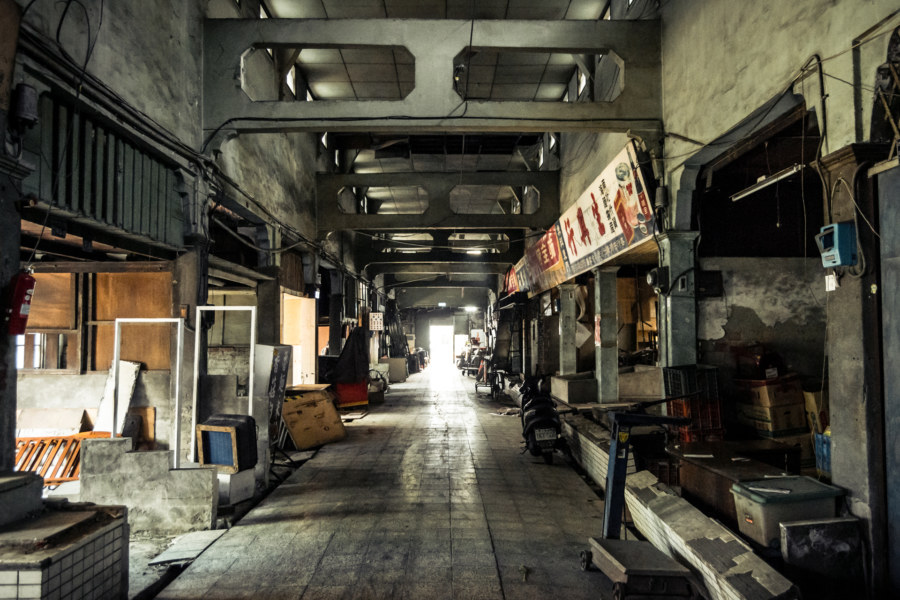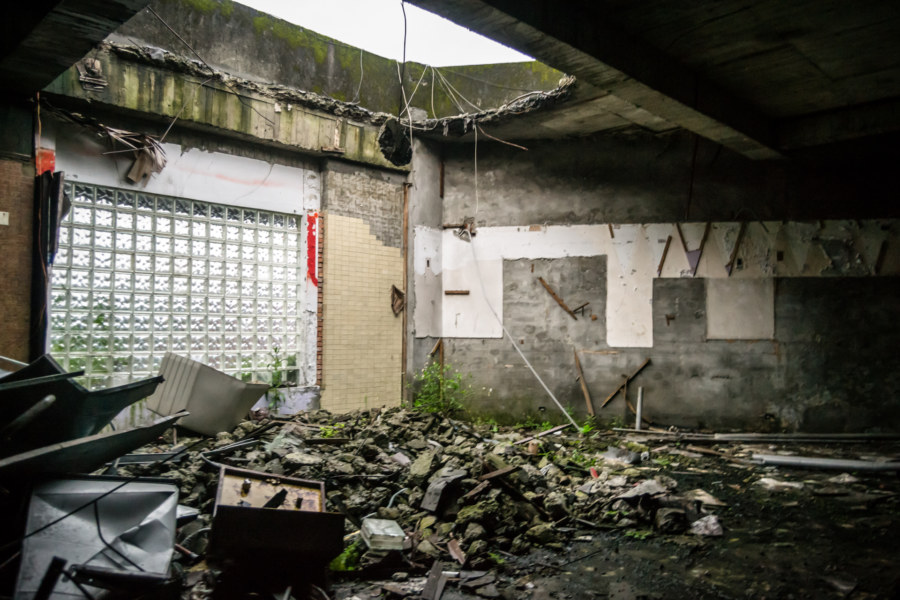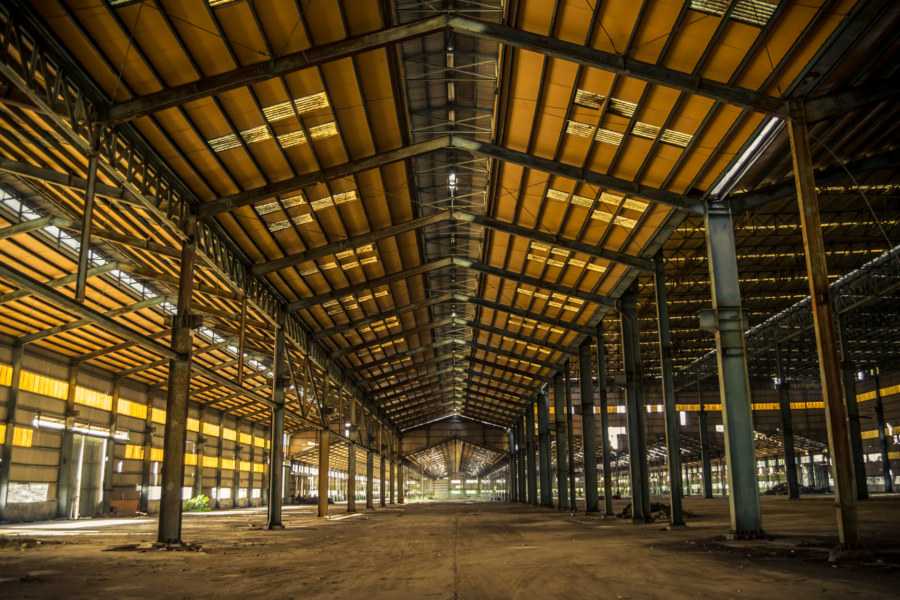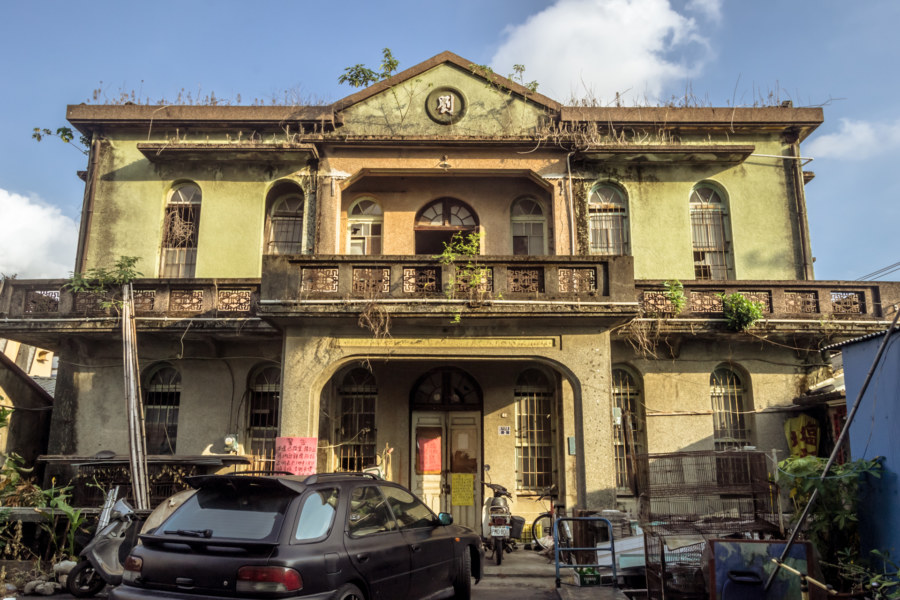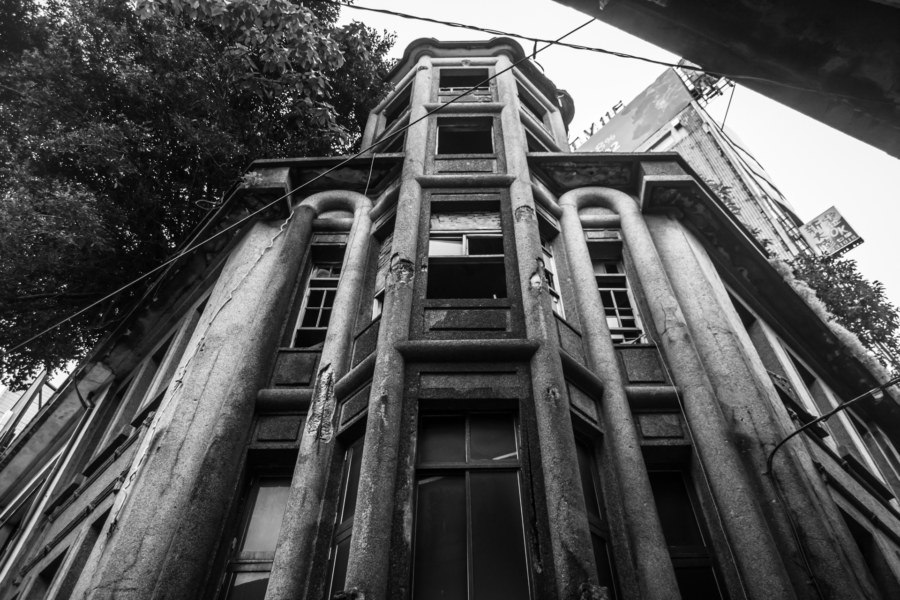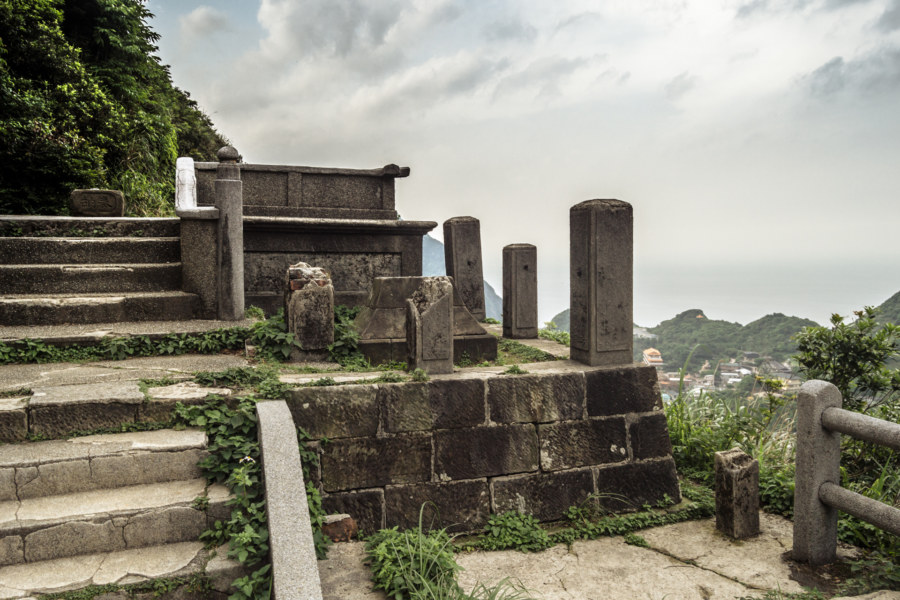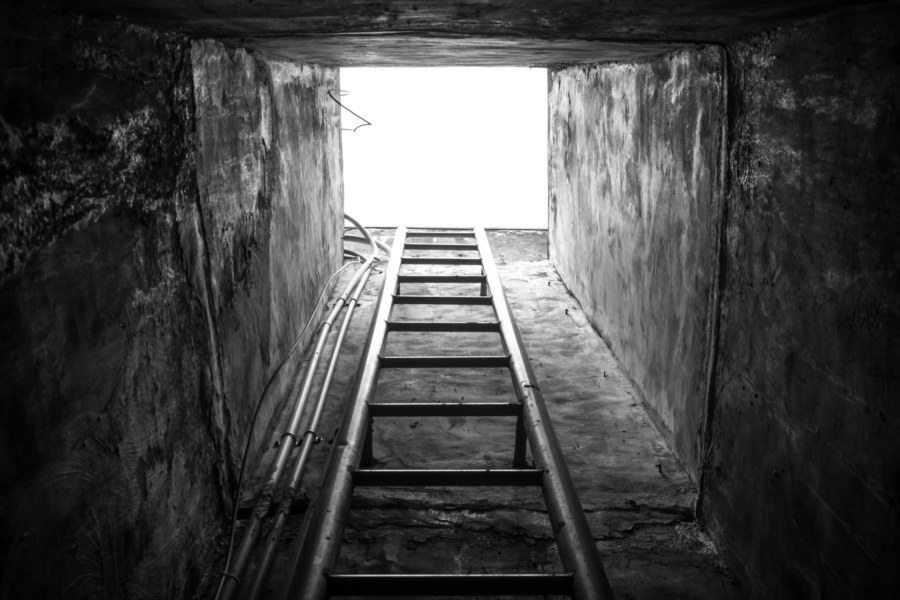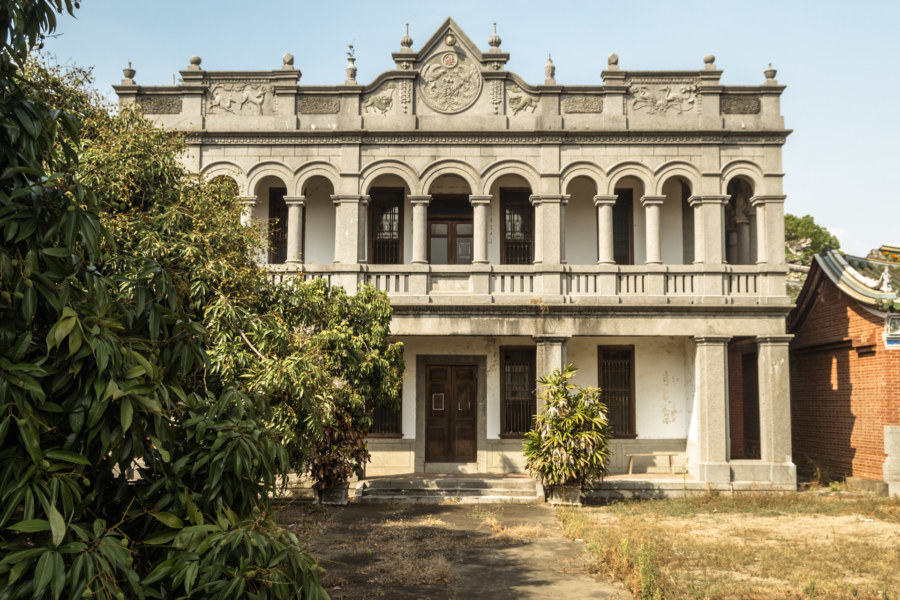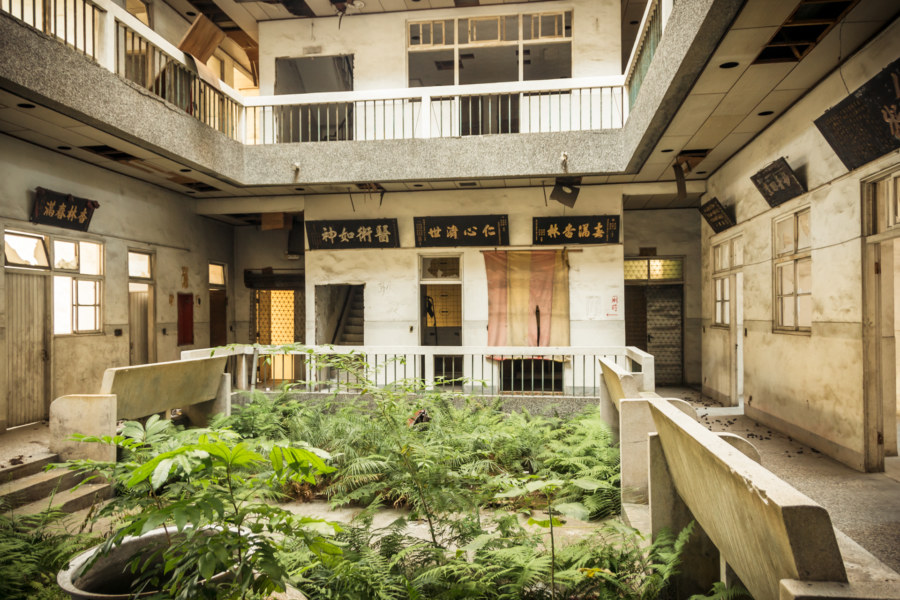West Market 西市場 is a historical site in downtown Tainan dating back to the earliest years of the Japanese colonial era. The first market building at this location was constructed in 1905, back when it fronted onto the milkfish farms of the Táijiāng Lagoon 台江內海. It suffered extensive damage when a catastrophic typhoon struck Tainan in August 1911. An expanded L-shaped structure was built in 1912, making it the largest market in southern Taiwan, but this was damaged by another typhoon in 1920, leading to another round of reconstruction, the results of which are still standing today. The old marketplace remains a hub of commercial activity in this part of the city—but many of its stalls were neglected or abandoned by the mid-2010s, when many of the photos in this article were captured. Presently the old market enjoys heritage status—and an extensive restoration effort was completed in 2020, transforming it into a bright and airy space.
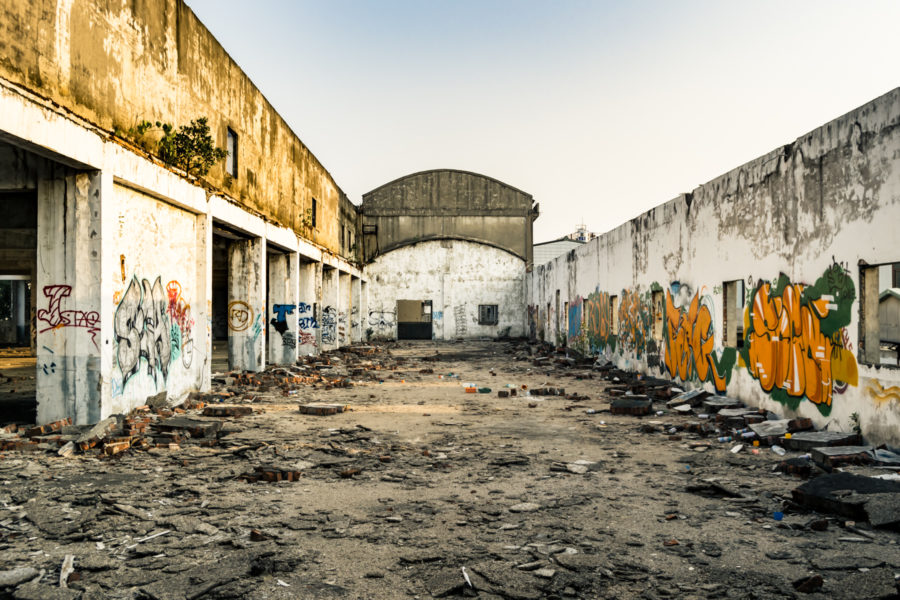
Abandoned buildings and other manmade structures left to the elements. Here I will share the results of various expeditions I have undertaken around the world. See also: urbex, rewilding, and the entire abandoned Taiwan series.
Adjacent Terms
Tongyi Bowling Alley 統一保齡球館
Keelung, like many cities in Taiwan, is a dark wonderland for urban exploration. You can hardly turn around without sighting yet another hulking ruin calling out to be entered. Most of these buildings are so decrepit that little remains to indicate what its purpose once was—a direct consequence of Keelung’s incessant rain and gloom. The process of decay works at a feverish pace in this grim port city, rapidly eroding evidence of human occupation in any abandonment exposed to the elements.
Yutian Automotive Factory 羽田汽車工廠
The massive ruins of the Yǔtián Automotive Factory 羽田汽車工廠 are located on the Dayeh University campus in Dacun, Changhua. There are four main buildings, each approximately 360 meters in length and 90 meters across for an estimated total of 32,500 square meters apiece. Outside of the Changhua Coastal Industrial Park 彰化濱海工業區 in Lukang (which opened in 1995) these buildings are probably the largest in the county—and the entire complex is readily visible from space.
Xinpi Machine Gun Fort 新埤反空降機槍碉堡
While cycling through Xinpi, an otherwise ordinary expanse of rural Pingtung, I was surprised to see a sign indicating that there was a “fort” somewhere in the area. I cut loose from the main road I was following and went to go investigate. After following a bend in the river just outside a small settlement I found it: a Japanese anti-aircraft fortification dating back to the late 1930s or early 1940s. I haven’t found a formal name for this fortification so I’m going to call it the Xinpi Machine Gun Tower 新埤反空降機槍碉堡 until I hear of something better.
Chaozhou Liu House 潮州劉厝
I noticed this old-fashioned western-style mansion on the outskirts of Chaozhou in Pingtung while cycling through the deep south of Taiwan in 2015. In a sea of ugly metal shacks and bland concrete apartment blocks it is a rare pleasure to encounter a building like this one. I also enjoy the challenge of trying to learn something of the history of such places. Usually with some knowledge of the local area and the family name on the facade I can piece something together from blogs and government records—but this time I’m stumped, and I’m not the only one. Just about all that is known for certain is the name, Liu House 劉厝, which came up in some real estate records. Based on my growing familiarity with Japanese colonial era architecture I would guess this mansion dates back to the 1930s or so.
Keelung Ghost House 基隆鬼屋
Keelung Ghost House 基隆鬼屋, formally the Línkāiqún Mansion 林開群洋樓 (and sometimes Keelung Lin Residence 基隆林宅), is one of the most famous ruins in Taiwan. Much like Minxiong Ghost House 民雄鬼屋 and Xinglin General Hospital 杏林綜合醫院, it commonly appears on lists of the most haunted places on the island. This ghostly reputation makes it difficult to separate credible information from the many tall tales that are told, particularly through the dark glass of machine translation.
Ogon Shrine 黄金神社
The Ōgon Shrine 黄金神社 (also known as the Gold Temple) is an abandoned Shinto shrine in the mountains above Jīnguāshí 金瓜石, an old gold mining town in Ruifang, Taiwan. Built in 1933 by the Nippon Mining Company while Taiwan was under Japanese rule, it was mostly destroyed in the post-war era by vandals. Even so, it’s in better shape than almost every other Shinto shrine in Taiwan apart from the Taoyuan Martyrs’ Shrine 桃園忠烈祠 and Kagi Shrine 嘉義神社 in Chiayi City. The incoming KMT government went to great lengths to expunge the island of Japanese influences.
Qiaoyou Building Supplemental
Recently I posted my full exploration of the Qiaoyou Building 喬友大廈, a towering ruin in the heart of Changhua City. It was a big building and I ended up capturing many more photographs than I ended up sharing there. Here, in this post, I’d like to share a few more photos I captured in black and white. I have also included a couple of images demonstrating how I digitally restore photographic negatives I find in the ruins (a technique discussed in more detail here). If you’re curious about this building be sure to see the original post.
Yumei Hall 玉美堂
Yùměi Hall 玉美堂, also known as known as Hóng Family Mansion 洪氏洋樓, is located in Jiālǎo Village 茄荖村, a small settlement on the eastern edge of Fenyuan in Changhua, Taiwan. Built in the late 1920s when the village was administered as part of Caotun in Nantou, it is one of only a handful of “Western-style” country manors built in central Taiwan during the Japanese colonial period (see my post about Jùkuíjū 聚奎居 for another great example).
Xinglin General Hospital 杏林綜合醫院
Xìnglín General Hospital 杏林綜合醫院 is perhaps the most famous ruin in downtown Tainan, Taiwan. It opened for business in 1975 as the largest hospital in the city and catered to the burgeoning middle class during the boom times of the Taiwan Economic Miracle. In 1993 the hospital shut down after being plagued by a number of scandals involving fraudulent records, medical malpractice, and allegations of wrongful death. Ongoing legal battles and fragmented ownership have left the building abandoned and neglected since then.
